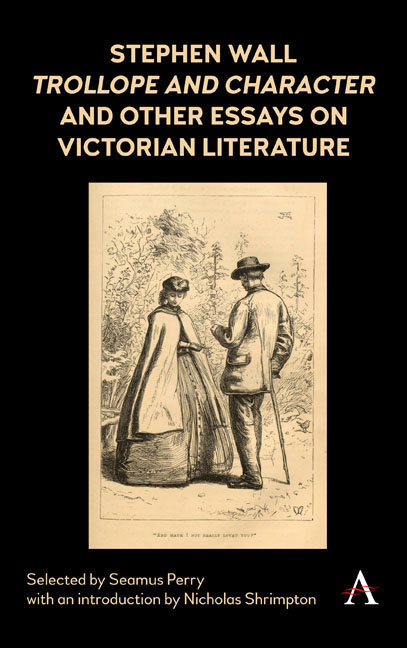Book contents
- Frontmatter
- Contents
- Preface
- Introduction: Stephen Wall and Trollope
- Part 1 On Trollope
- Part 2 On Dickens and Others
- 3 [George Eliot and Her Readers] [1965]
- 4 Jane Austen's Judgments [1968]
- 5 Dickens: New Words and Old Opinions [1969]
- 6 [Dickens and His Readers] [1970]
- 7 Dickens in 1970 [1971]
- 8 Annotated English Novels? [1982]
- 9 Affective Intentions [1985]
- 10 Virtuoso Variations [1987]
- 11 Going Beyond the Repertory [1990]
- 12 A Little Local Irritation [1998]
- Index
10 - Virtuoso Variations [1987]
from Part 2 - On Dickens and Others
Published online by Cambridge University Press: 25 July 2018
- Frontmatter
- Contents
- Preface
- Introduction: Stephen Wall and Trollope
- Part 1 On Trollope
- Part 2 On Dickens and Others
- 3 [George Eliot and Her Readers] [1965]
- 4 Jane Austen's Judgments [1968]
- 5 Dickens: New Words and Old Opinions [1969]
- 6 [Dickens and His Readers] [1970]
- 7 Dickens in 1970 [1971]
- 8 Annotated English Novels? [1982]
- 9 Affective Intentions [1985]
- 10 Virtuoso Variations [1987]
- 11 Going Beyond the Repertory [1990]
- 12 A Little Local Irritation [1998]
- Index
Summary
Hardly any of the original likenesses of Dickens – whether portraits or photographs – give much idea of that vivacity of eye which struck his contemporaries so forcibly. Any page of his works, however, will almost certainly provide examples of the extraordinary energy with which he saw things. It is not only a question of acute observation of course, but also of masterful appropriation; Dickens feels he has to recreate as well as record. In Dickens the Designer Juliet McMaster aims to show how and why Dickens makes appearances tell, so that vision becomes subsumed by ‘vision’.
The first part of the book is given over to examples of Dickens's presentation of such details as heads, faces, eyes, bodies, gestures and his use of space and light. What Professor McMaster stresses is Dickens's use of physical appearance to define moral essence – Pickwick's fatness indicates his benevolence, Uriah Heep's serpentine writhings a sinister sexuality and so on. But it hardly seems necessary to underline the mere fact of this aspect of Dickens: he was always an artist of the obvious as well as of the astonishing. What is inimitable is surely the combination of a primary and even primitive physical delineation of a character's moral quality with the extreme and increasing verbal virtuosity of the novelist's elaboration of appearance. McMaster tends to play down the extent to which descriptions in Dickens become free- falling stunts of metaphor and fantasy and, as such, develop a kind of self- delighting self- sufficiency. Moreover, the oceanic abundance of physical detail in Dickens makes any brief trawl such as is offered here look inadequately representative.
In the second part of Dickens the Designer McMaster takes six of the novels and attempts to show how in each of them certain visual motifs are utilized to give us a sense both of the book's overall composition and of its essential meaning. She rightly emphasizes Dickens's wish to ‘make you see’ (in Conrad's famous phrase) but leaves rather to one side the complicated question of how much of our perception of Dickens we owe to his illustrators, especially Phiz. McMaster proposes some ambitious analogies between Dickens's practice and that of painters like Turner, Manet and the Impressionists, and suggests that the use of fog in Bleak House resembles Turner's exploitation of atmospherics.
- Type
- Chapter
- Information
- Publisher: Anthem PressPrint publication year: 2018



